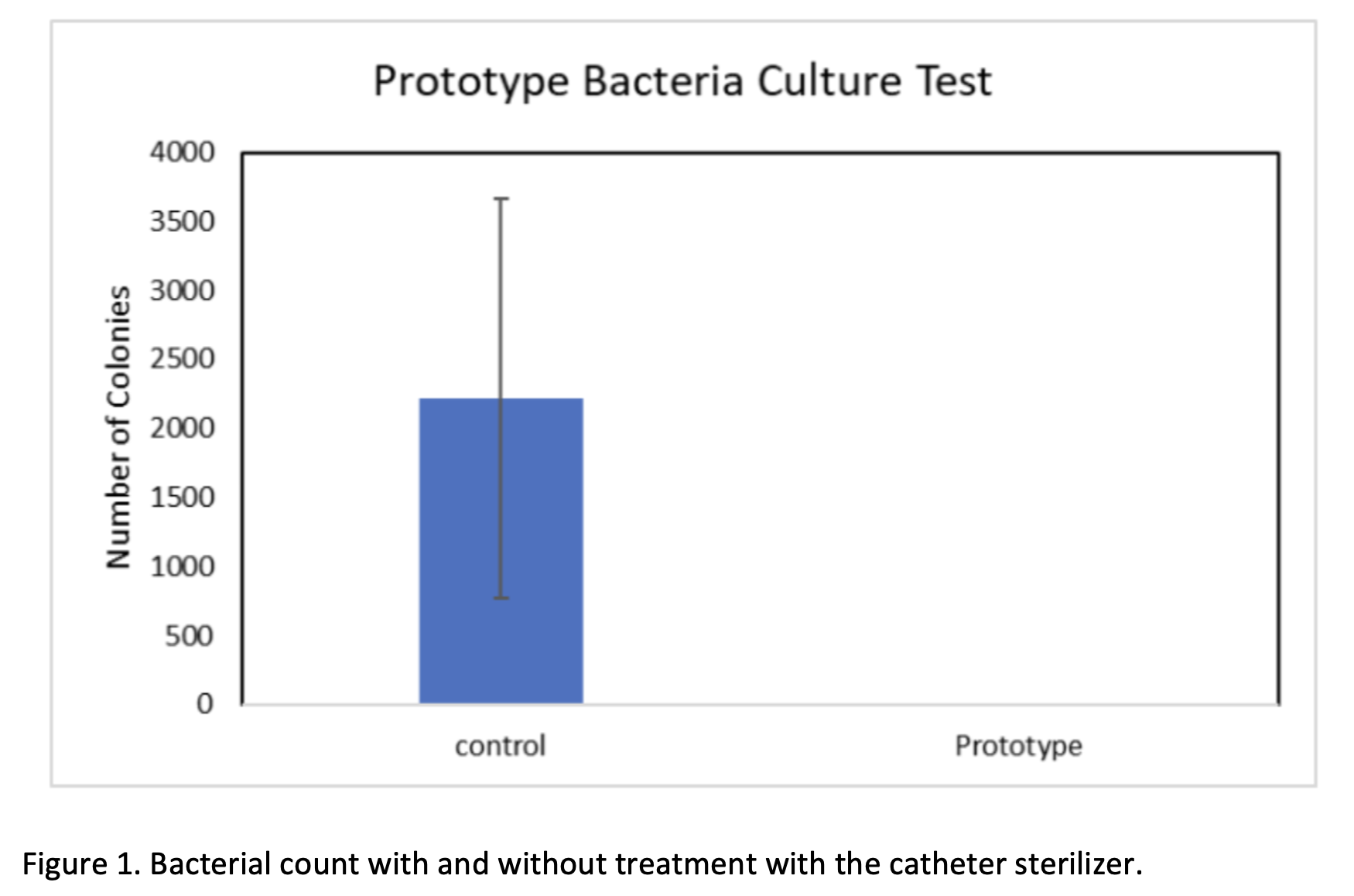Urinary Catheter Sterilization using a Novel Portable Sterilization Device to Effectively Eradicate Bacterial Counts
Grant Delanoy, BS1, Kathy Cai, BS1, Amulya Kadaba, BS1, Anirudh Ajay, BS1, Alikhan Daya, BS1, Rafael Hernandez, BS1, Catherine Nguyen, MD2, Hannah Bachtel, MD2, Chester Koh, MD2.
1Texas A&M University, College Station, TX, USA, 2Texas Children's Hospital, Houston, TX, USA.
Background: Clean intermittent catheterization (CIC) is often required for pediatric patients with neurogenic bladder secondary to conditions such as spina bifida, spinal cord injuries, or multiple sclerosis, or with a history of urinary tract obstruction (posterior urethral valves or urethral atresia). Due to the cost and insurance coverage limitations of sterile-packaged single use catheters, these catheters often need to be cleaned and reused. In addition, single-use catheters generate significant waste. In collaboration with the engineering teams at local engineering schools, we sought to develop a portable catheter sterilization device to improve the sterility of reusable catheters as well as reduce the waste generated by disposable single use catheters.Method: Engineering and clinical teams jointly produced a novel portable sterilization device prototype that utilized a combination of ultraviolet-C light (UV-C) and ultrasonic waves which are two known disinfection technologies. The small and portable cylindrical device was created in the size of a standard mug and represented a novel design of dual sterilization with UV-C and ultrasonic waves with a portable energy source. Bacterial counts for Escherichia coli and Staphylococcus aureus were measured on sterilized catheters after bacteria exposure in a benchtop model as well as on bacteria-coated urinary catheters that served as controls.Result: Urinary catheters were dipped in liquid bacterial cultures and either immediately swabbed for culture (controls) or treated in the sterilization device for five minutes and then swabbed for culture. The cultures were incubated at 37o C for 24 hours. The colonies on each culture were counted. At a setting of 40kHz for the ultrasonic transducer and a UV-C wavelength of ~265 nanometer, five minutes of treatment in the sterilization device resulted in no detectable bacterial growth of bacteria when compared to controls (P <0.05) (Figure 1). Treatments up to 15 minutes had sustained sterilization effects and no appreciable degradation of the catheters.Conclusion: A novel portable catheter sterilization device was easy to use and effective in rapid sterilization of urinary catheters without catheter degradation. Use of portable catheter sterilization devices addresses catheter limitations that pediatric urology patients face as well as reduce medical costs and global waste associated with disposable catheters while also addressing infection risks associated with reusable catheters. Future clinical studies are planned in the pediatric and adult neurogenic bladder populations with expected benefits for pediatric patients in low resource settings.

Back to 2023 Abstracts
